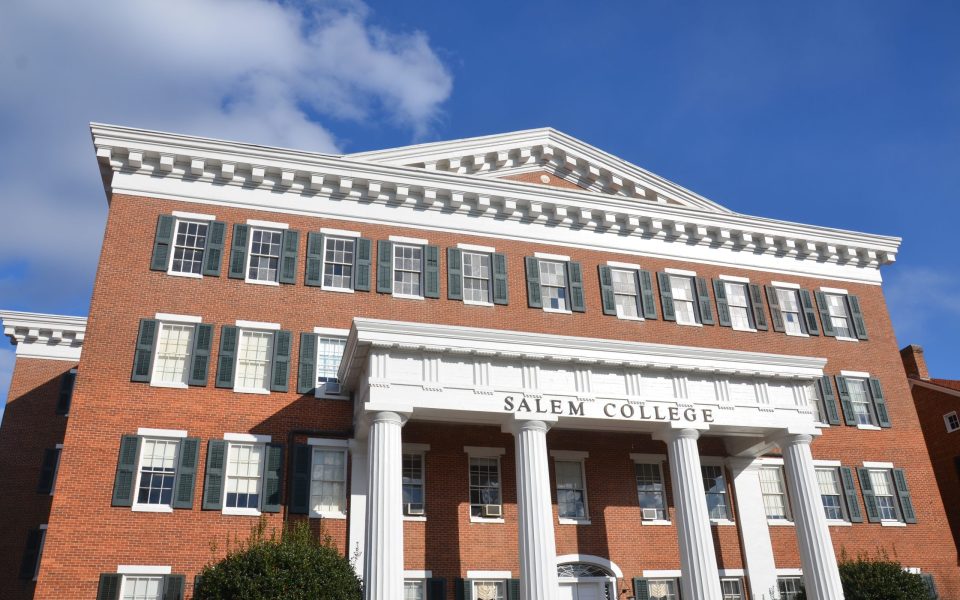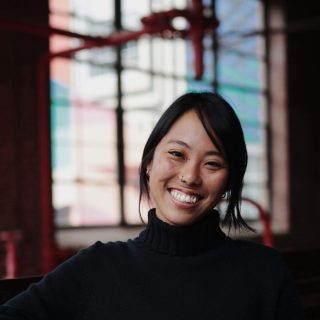As the year comes to a close, university and college administrators are looking back on the past year to help inform them on how to tackle the coronavirus pandemic in the the spring. With a diverse group of institutions in the Triad — from community colleges to public four-year universities to smaller private schools — the area is a unique microcosm of what higher education may look like across the nation next year.
“We’re asking students to do a soft quarantine before they return,” said Jermaine Thomas, the director of public safety and the chair of the health and safety task force at Guilford College. “Students will be online for the first week of classes and that may be pushed out to the first two weeks. We’re paying attention to the state and what the governor might do and looking for any type of stay-at-home order.”
Guilford College is a private school with a population of about 1,900, including faculty and staff. According to the school’s year-to-date coronavirus dashboard, there have been 36 positive cases of COVID-19 among the school’s community, which amounts to only 1.9 percent of the population. Earlier this year, Thomas said they shut athletics down and adjusted the dining hall for to-go orders. They also moved 80 percent of classes online and opened a residence hall for high-risk students to live alone. In the fall, all students coming back to campus had to get tested.

Thomas said randomized testing and proactive communication with students helped keep their case counts low.
“Every 10 days, we would have randomized testing of 250 community members,” Thomas said. “We never saw a cluster.”
Thomas also said student athletes were tested three times throughout the semester and the school used public-health student interns to reach out to their fellow classmates for contact tracing.
“I think the buy-in with the campus helped a lot,” Thomas said.
Other larger universities around the state and nationwide struggled with containing the virus during the fall semester, leading to reversals of policy and the closure of campuses. Appalachian State University, East Carolina University, NC State University, UNC-Chapel Hill and UNC-Charlotte all had more than 1,000 positive cases this year. All except for Appalachian State University ended in-person instruction and sent students home in the fall. One student — Chad Dorrill, a sophomore at App State — died from complications from COVID-19 on Sept. 28.
Administrators at Salem Academy and College in Winston-Salem decided early on to remain fully remote for all students this past year.
“Our decision for the fall was made in August,” said Susan Henking, the interim president of Salem Academy and College. “We decided we would not do residential education; we went virtual for everything with the exception of some social events. For the most part, our buildings were shut; the employees didn’t come to campus.”
Because of that, Salem College doesn’t have a cumulative dashboard for keeping track of COVID-19 cases like many neighboring higher education institutions. Without students and staff on campus, it’s impossible to know how many people associated with the institution have been infected.
“Our numbers look like zero,” Henking said. “But we know that that’s a reflection of the fact that we’re not on campus, but we know anecdotally that we have had a few positive cases.”
Henking said students with the college will continue to learn remotely while academy students — grades 9-12 — will return in a hybrid model where students come to campus to learn but do not stay in dorms.
“Frankly, we learned that 13- to 17-year-olds are extremely well-behaved,” Henking said. “They taught us that we can come back.”
Henking hopes that monitoring how the split model works for the 71 students at the academy this coming spring will inform whether or not the college — which has about 900 students on average — can move to a hybrid model as well.
According to Erin Adams, the assistant vice president at Salem Academy and College, all students returning are required to sign a community contract and are being asked to do a two-week quarantine prior to returning to campus. They have to complete an online virtual training about safety protocols as well as undergo daily symptom monitoring through a health screening app. Temperature checks will be administered as students come back to campus.
“People are tired, but they are committed to the health of each other and to me,” Henking said. “That’s what makes me think I made the right decision.”
In March, all 17 public institutions with the UNC School System moved to an all-online model in spring of this year. However, by the fall, many institutions were bringing students back to campus. According to the College Crisis Initiative at Davidson College, about 37 percent of four-year schools across the country taught fully or primarily online this past fall while 34 percent taught fully or primarily in person. The rest relied on a hybrid teaching model.

That’s exactly what NC A&T University did for its fall semester, according to Todd Simmons, associate vice-chancellor for university relations. He said 70 percent of students chose to take at least one online class and 25 percent chose to do exclusively online learning.
“The lion’s share of students was taking some mixture of in-person and online,” Simmons said.
According to the school’s COVID-19 dashboard, NC A&T had 576 cumulative positive cases this past year, making it one of the schools with the largest number of infections in the Triad. Wake Forest University had 661 cases while UNCG had 345. By percent of population, that amounts to about 3.6 percent for NC A&T, 7 percent for Wake Forest, and 1.5 percent for UNCG. Greensboro College, one of the smallest higher education institutions in the Triad, had 47 positive cases, or about 4.7 percent of its population.
Brett Eaton, the senior associate vice president and director of communications at Wake Forest University, said it’s hard to compare positivity rates between schools because institutions may be counting cases differently.
“Our dashboard includes every positive case known to the Student Health Service, including tests taken off-campus by third-party providers, tests taken in the Student Health Service and tests collected as part of our random testing program,” Eaton said in an email.
Most universities and colleges keeping track of COVID-19 cases make a note on their dashboards explaining that the numbers reflect positive cases where the infected individual was on campus while they were contagious.
Eaton said testing standards at Wake Forest helped inform the university to change the campus’s operating status from “yellow” to “orange” when positive cases rose in October.
“The change was meant to discourage students from leaving campus for anything other than necessary activities,” Eaton said.
Like many other large schools, Wake Forest moved all classes online in March but invited students back to campus in the fall for a blend of in-person and online courses. For spring 2021, Eaton referenced a recent letter by Penny Rue, the vice president for campus life, that was posted on the university’s website. In the letter, Rue states that students will return to campus in the spring but will be expected to be tested for COVID-19 and should self-quarantine for two weeks before returning to campus. On-campus students will also have to log daily symptoms in an app used by the university.
At Forsyth Tech, only 15 individuals tested positive this year, despite the school’s large population of 23,000 individuals, including faculty and staff. President Janet Spriggs said that their school moved strictly to online in the spring but eased into a hybrid model for the fall. But because Forsyth Tech a commuter campus and they don’t have residence halls, the community college’s numbers remained low, Spriggs said.
“I think the biggest thing is that we didn’t have 23,000 people on our campus like we normally would,” she said. “Community colleges also don’t have dorms…. We don’t do foodservice. All those things are so much different. That environment can be problematic.”
Simmons said the cases at NC A&T could be attributed to off-campus activity by students. He said that most of the positive cases at NC A&T took place in October and November when the university saw clusters erupt on campus.

“There may have well been some students who were getting COVID fatigue and going to a party off campus,” Simmons said about the possible reasons behind the clusters. “We don’t rule that out at all. There were definite instances of that happening, but we made it clear to those students that that would not be tolerated. We would not let them bring infection onto campus.”
Simmons said that none of the outbreaks were that severe and only amounted to about a dozen infected students each time. When a cluster did occur, Simmons said that the university deployed mobile testing clinics where staff would go to specific residence halls and administer rapid response tests on students. If any tested positive, the students would be removed from the dorm and would quarantine until they could produce a negative test. Because of the university’s quick response to the clusters, Simmons said none of clusters ballooned into the kind of outbreaks seen at other large institutions like UNC-Chapel Hill.
For the coming spring, Simmons said the university has canceled all public events, with the exception of sports. For now, he’s hoping the vaccine and attention to prevention will keep students and faculty safe moving forward. The university will also be getting five ultracold refrigerators to receive and store doses of the vaccine. University officials hope to vaccinate students and staff sometime during the spring term.
“We’re taking it one week at a time,” he said.
Henking of Salem Academy and College echoed Simmons’ sentiments. She said that deciding to stay remote was a difficult decision that wasn’t uniformly accepted by the school’s population. However, she said she stands by her decision and that administrators have to do what they think is the best for their schools.
“I think the tough part about this was there was no win-win decision here,” she said. “It was, ‘Let’s do the best we can in shocking circumstances.’ I think everybody made the best decisions they could. I really, really hope that 2021 is going to be a brighter year for Salem College, Salem academy and for all of us.”
Join the First Amendment Society, a membership that goes directly to funding TCB‘s newsroom.
We believe that reporting can save the world.
The TCB First Amendment Society recognizes the vital role of a free, unfettered press with a bundling of local experiences designed to build community, and unique engagements with our newsroom that will help you understand, and shape, local journalism’s critical role in uplifting the people in our cities.
All revenue goes directly into the newsroom as reporters’ salaries and freelance commissions.


Leave a Reply